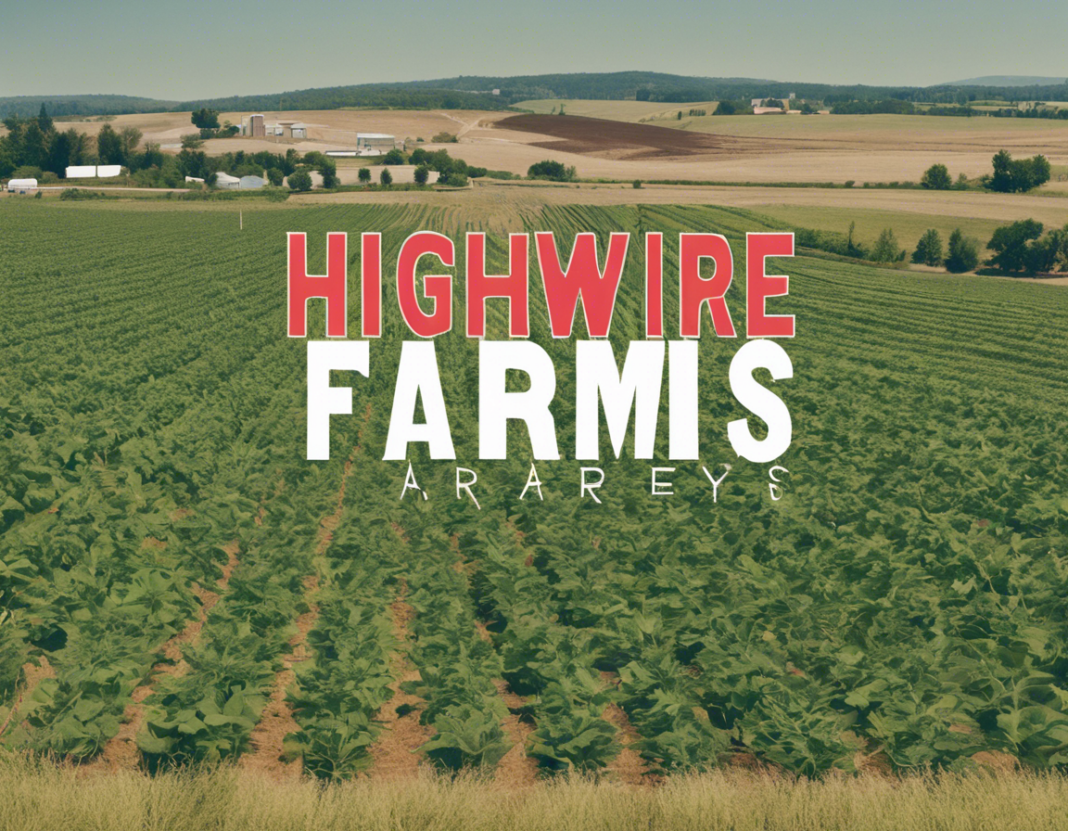In the world of agriculture, there exist numerous innovative practices and techniques that are revolutionizing the way we grow our food. Highwire farming is one such method that has been gaining popularity in recent years for its ability to maximize space efficiency while producing high yields. In this comprehensive guide, we will delve into the unique world of highwire farming, exploring its benefits, challenges, best practices, and how it is shaping the future of agriculture.
Understanding Highwire Farming
Highwire farming, also known as vertical farming or high-density farming, involves growing crops vertically on suspended wire systems instead of traditional horizontal fields. This vertical setup allows for more efficient use of space, making it ideal for urban areas or locations with limited land availability. The crops are typically grown in rows or tiers, with each plant hanging from the wires at regular intervals.
Benefits of Highwire Farming
- Space Efficiency: Highwire farming maximizes vertical space, allowing for higher crop yields in a smaller footprint.
- Water Conservation: The vertical setup enables efficient water usage, as excess water can be recirculated and reused.
- Pest Control: Elevating crops can help reduce pest infestations, as some insects may be deterred by the height.
- Labor Efficiency: The vertical arrangement makes it easier for farmers to access and maintain crops, leading to increased productivity.
- Year-round Production: Highwire farming can be done indoors or in greenhouses, enabling year-round production regardless of external weather conditions.
Challenges of Highwire Farming
While highwire farming offers numerous benefits, it also comes with its own set of challenges:
- Initial Investment: Setting up a highwire farm can be costly due to the infrastructure required for the vertical growing system.
- Technology Dependence: Highwire farming relies heavily on technology such as automated irrigation systems and artificial lighting, which can be subject to malfunctions.
- Crop Selection: Not all crops are suitable for highwire farming, so careful consideration must be given to plant selection.
- Maintenance: Regular maintenance of the wire systems and monitoring of plant health are crucial for successful highwire farming.
- Energy Consumption: The use of artificial lighting and climate control systems can lead to higher energy consumption.
Best Practices for Highwire Farming
- Choose the Right Crops: Select crops that are well-suited for vertical growth, such as tomatoes, cucumbers, and leafy greens.
- Invest in Automation: Utilize automation technology for tasks such as watering, nutrient delivery, and climate control to improve efficiency.
- Monitor Plant Health: Regularly check plants for signs of pests, diseases, or nutrient deficiencies to address issues promptly.
- Optimize Lighting: Use a combination of natural light and artificial lighting to provide the optimal light spectrum for plant growth.
- Implement Sustainable Practices: Incorporate sustainable farming practices such as water recycling and organic pest control methods to reduce environmental impact.
The Future of Highwire Farming
As the global population continues to grow, the demand for food production will increase, putting pressure on traditional farming methods. Highwire farming offers a sustainable solution to this challenge by maximizing space efficiency and resource utilization. With ongoing advancements in technology and farming techniques, highwire farming is poised to play a significant role in the future of agriculture, particularly in urban areas where land availability is limited.
Frequently Asked Questions (FAQs)
- Is highwire farming only suitable for certain types of crops?
-
Highwire farming is ideal for crops that can be grown vertically, such as tomatoes, cucumbers, strawberries, and leafy greens.
-
What is the difference between highwire farming and traditional farming?
-
Highwire farming differs from traditional farming in its vertical setup, which allows for more efficient use of space and resources.
-
How can I get started with highwire farming?
-
To start highwire farming, you will need to invest in infrastructure for the vertical growing system, select suitable crops, and implement appropriate technology for automation and monitoring.
-
What are the key benefits of highwire farming compared to traditional farming methods?
-
Highwire farming offers benefits such as higher space efficiency, water conservation, pest control, labor efficiency, and year-round production.
-
Are there any limitations or challenges associated with highwire farming?
- Challenges of highwire farming include the initial investment cost, technology dependence, crop selection, maintenance requirements, and energy consumption.
In conclusion, highwire farming represents a promising approach to sustainable agriculture, offering a viable solution to the challenges of food production in a rapidly changing world. By maximizing space efficiency, conserving resources, and embracing technological advancements, highwire farming is reshaping the way we grow our food and paving the way for a more sustainable future in agriculture.
